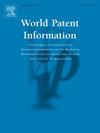奇迹是如何发生的:在一家跨国制造公司申请专利
IF 2.2
Q2 INFORMATION SCIENCE & LIBRARY SCIENCE
引用次数: 0
摘要
近几十年来,专利在全球经济中变得越来越重要。今天,专利被用于各种各样的目的,远远超出了最初防止新发明被模仿进入社会的作用。在为更可持续的社会制定解决方案的工作中,专利具有促进必要的合作和技术共享的潜力。为了补充关于将专利用于这些目的的许多研究,本文考察了实施专利战略的组织内部实践。引入边界对象的概念来分析专利工作及其在不同站点之间的协调。本文对文献有三个贡献。首先,战略工作是专利工作的必要组成部分,但不是充分组成部分;战略的实施依赖于组织中所有的专利工作。其次,在组织专利工作时,重点应该是确定相关的专家群体,而不仅仅是组织单位。第三,“专利”作为边界对象可以协调围绕专利的话语,从而产生从事专利工作的动机和承诺。然而,它还不够强大,不足以协调工作本身;这是由在节点之间传输的与专利相关的工件来协调的。本文章由计算机程序翻译,如有差异,请以英文原文为准。
How the magic happens: Patenting work at a multinational manufacturing company
Patents have become increasingly important in the global economy in recent decades. Today, patents are used for various purposes, far beyond the initial role of preventing imitation of new inventions introduced into society. In the work to develop solutions for more sustainable societies, patents have the potential to facilitate the necessary collaboration and sharing of technology. To complement the many studies on using patents for these purposes, this paper examines the intra-organisational practices with which patent strategies are implemented. The concept of boundary objects is introduced to analyse patenting work and its coordination across different sites. The paper makes three contributions to the literature. First, strategy work is a necessary but not a sufficient part of patenting work; implementing a strategy relies on all patenting work in the organisation. Second, In the organisation of patenting work, the focus should be on identifying relevant communities of experts and not simply organisational units. Third, "patents" as boundary objects can coordinate discourse around patents, which creates motivation and commitment to engage in patenting work. It is, however, not strong enough to coordinate the work itself; this is instead coordinated by patent-related artefacts that travel between the nodes.
求助全文
通过发布文献求助,成功后即可免费获取论文全文。
去求助
来源期刊

World Patent Information
INFORMATION SCIENCE & LIBRARY SCIENCE-
CiteScore
3.50
自引率
18.50%
发文量
40
期刊介绍:
The aim of World Patent Information is to provide a worldwide forum for the exchange of information between people working professionally in the field of Industrial Property information and documentation and to promote the widest possible use of the associated literature. Regular features include: papers concerned with all aspects of Industrial Property information and documentation; new regulations pertinent to Industrial Property information and documentation; short reports on relevant meetings and conferences; bibliographies, together with book and literature reviews.
 求助内容:
求助内容: 应助结果提醒方式:
应助结果提醒方式:


